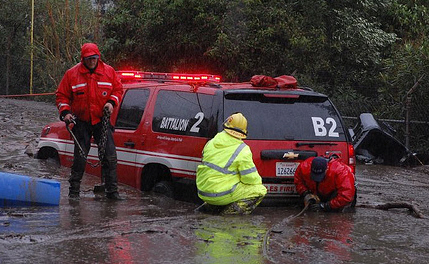I received a message from Cindy Schiffer, a District Ranger on the George Washington – Jefferson National Forests in Blacksburg, Virginia, explaining that a person who has been on the Type 1 Incident Management Teams in the Southern Geographic Area is volunteering in Haiti assisting victims of the earthquake. Their group is very much in need of medical supplies. Here is the message from Ms. Schiffer:
I just got a call from Peter Dybing. He has worked on both the blue and red teams in supply. He is currently in Haiti, volunteering with St. Croix Rescue. (He lives in the Virgin Islands and is an EMT with St. Croix Rescue.) There is a small group of them – one physician and 6 EMTs, with a few more planning to join them. He said they are treating people in the street who are noncritical patients. He said the hospitals are completely overwhelmed and there are many people in the streets with major wounds and lots of infections (I’ll spare you the details but it is clear that without treatment many of these people could easily slip into critical condition.) They are cleaning the open wounds, treating them with antibiotics, and bandaging them up until they can heal to the point that the wounds can be dealt with in a more permanent manner.
They have run out of medical supplies and are looking for financial support for the incoming staff to bring more supplies with them. They are working with a group whose website is “www.haitisupport.org”. He said the web site isn’t updated to discuss the work they are now doing in Haiti because everyone involved in the organization is now in Haiti trying to help.
There is a place on the web site called “donate now”. I told Peter I would share this need with folks on the teams and on the Forest in case anyone would like to support them by donating to the organization.
Cindy
I replied to Cindy, asking if I could post her message here. I also asked if someone donates by credit card, can the group in Haiti access the money quickly enough to make a difference before some of those minor injuries turn into life-threatening conditions?
Her reply:
I couldn’t answer your question so I called Peter back and I think the info he shared is worth passing to all…Everyone working with him is doing so as a volunteer, no one is receiving any compensation. They are checking the donations to the web site daily and wire transferring the funds to the Dominican Republic. Then they drive over the border about every other day to buy supplies (I would guess that more funds available would probably mean less trips). All the funds go directly to medical supplies or the gasoline to get it – zero overhead or administrative costs. They have set up a field clinic. Many of the wounds are substantial and infected so every hour is critical.
I tested the donation system and sent them a contribution for their “General Fund”. I paid with a credit card, and the system worked very well. This is an excellent way to directly help people, and we know that the medical supplies will not be delayed, siphoned off by corporations, or sit on the tarmac at a tiny overwhelmed airport.





